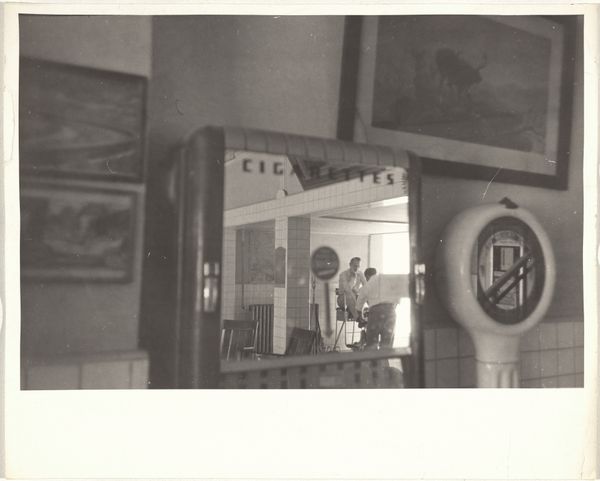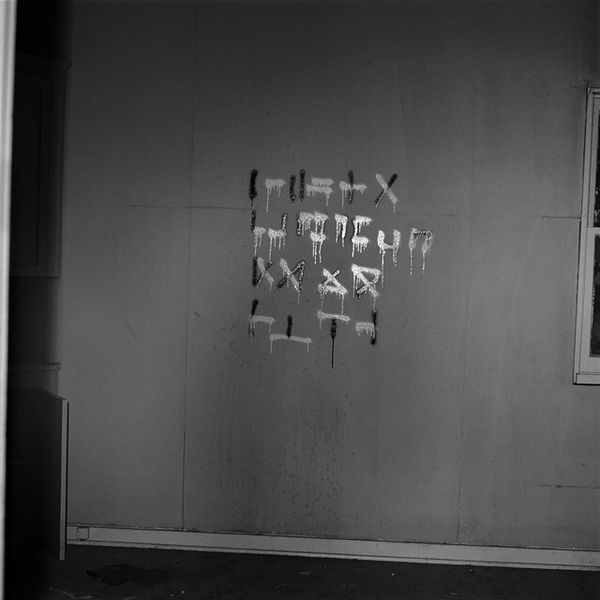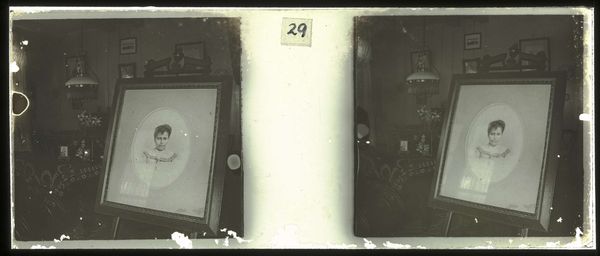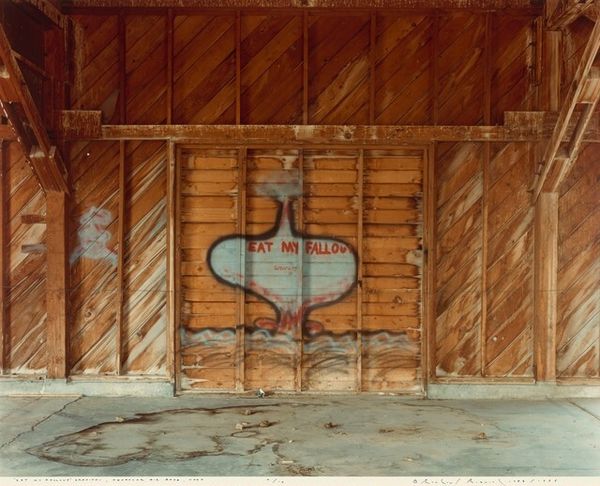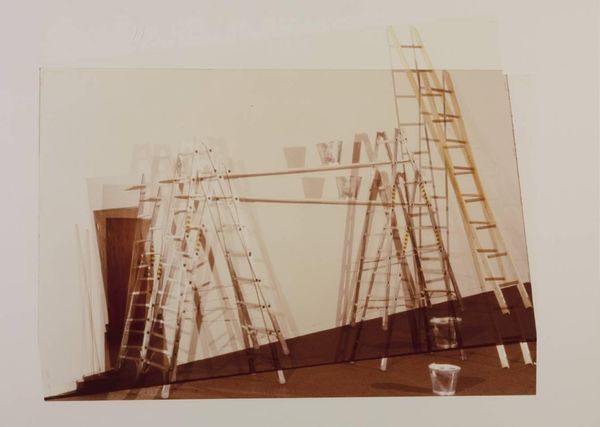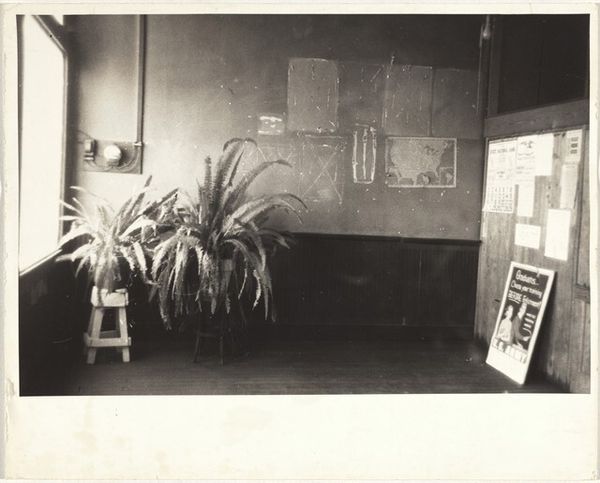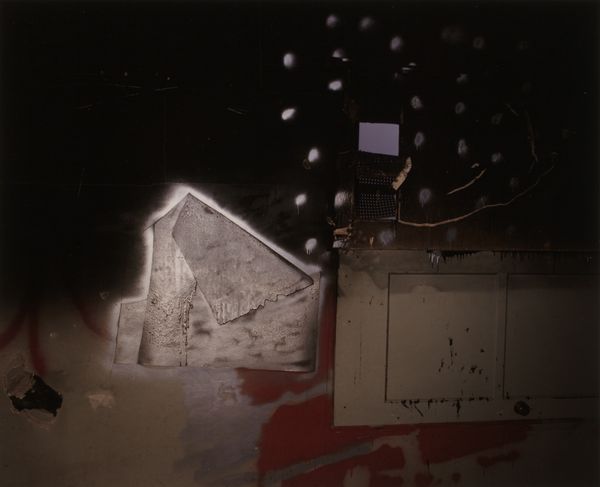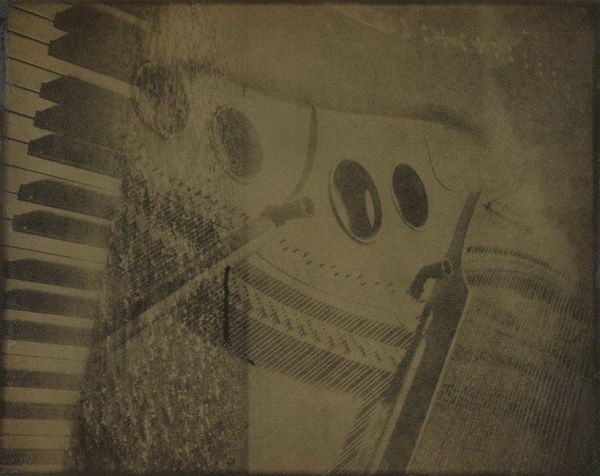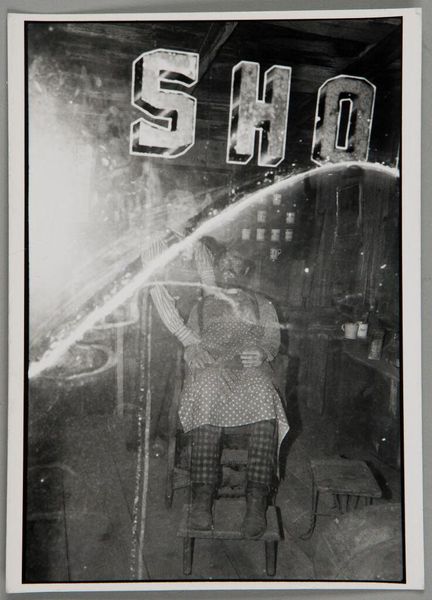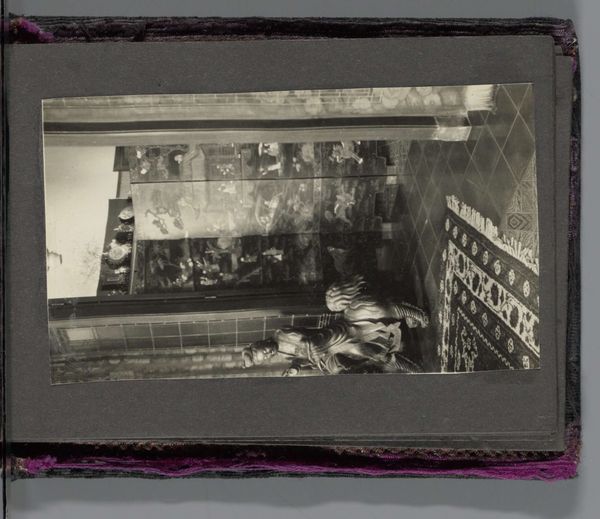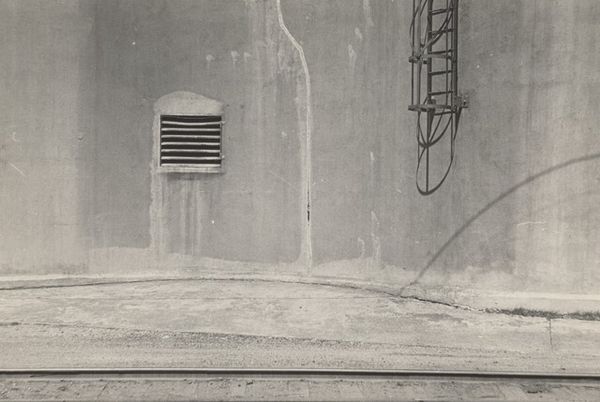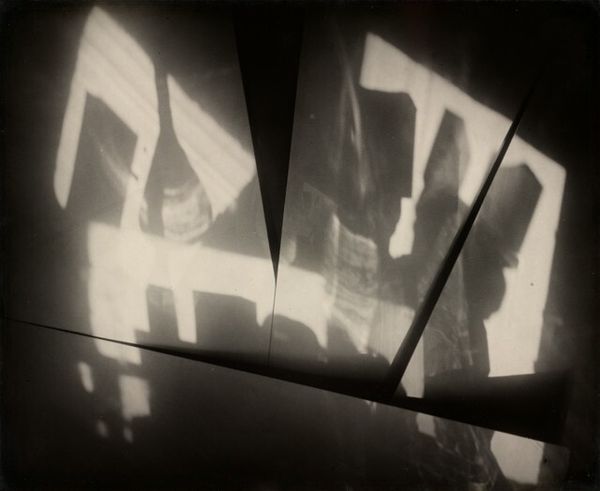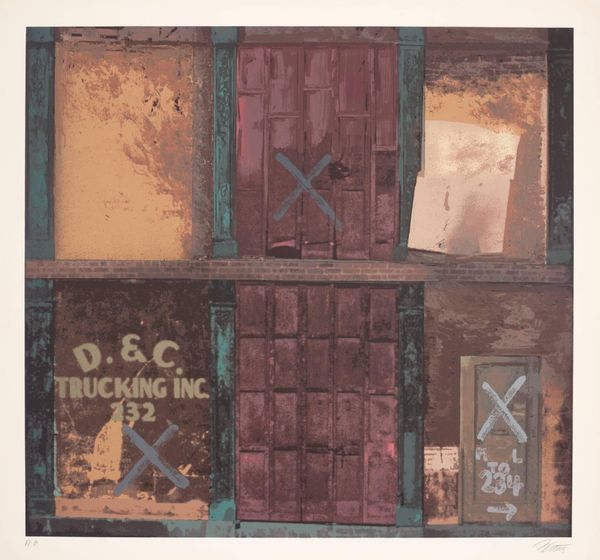
Signs and balloons, Memphis, Tennessee Possibly 1993 - 1994
0:00
0:00
photography
#
film photography
#
street-photography
#
photography
#
derelict
#
cityscape
#
realism
Dimensions: image: 8.57 × 12.7 cm (3 3/8 × 5 in.) sheet: 20.32 × 25.4 cm (8 × 10 in.)
Copyright: National Gallery of Art: CC0 1.0
Curator: Let's discuss William Christenberry's photograph, "Signs and balloons, Memphis, Tennessee," believed to be taken sometime between 1993 and 1994. Editor: There’s a forlorn quality here; those pale balloons juxtaposed with the neon beer signs behind the grime-streaked glass evoke a sense of faded revelry. The composition feels both claustrophobic and distant. Curator: Absolutely. The layering here is masterful, creating a complex visual field. The neon signs for various beer brands—Stroh’s, Busch, Miller, and Lite—fight for prominence behind a facade marred by streaks that seem like tears. Note the window frame bisecting the image and segmenting these objects within. Editor: The image also reflects changes in the brewing industry as large brands outcompete smaller breweries. Each sign indicates consumer allegiance as they become more homogeneous during the period, the very balloons suggesting the empty nature of the choice involved in a global brand. Curator: Yes, the balloons function symbolically as celebratory elements adrift, visually contradicting the image’s overall despondency, don’t you agree? The lighting also strikes me; the stark, cold neon is softened only by those balloons that mute the urban decay slightly. Editor: Speaking of urban spaces, the city becomes more than mere locale, and rather, a character in this captured moment. Memphis' unique, fraught, racial and socio-economic history hangs heavy here as each component contributes to an almost accidental still life composition. The fact it is a photograph—not staged—lends it more power. Curator: True. There's an unintentional authenticity. We are not distanced. These sorts of direct observations remind us to consider the visual texture that speaks to our shared experiences within built spaces and places in decline. It forces us to question assumptions. Editor: Precisely, and in our observation and consideration of Christenberry’s work, we perhaps also catch a small reflection of our own place within the broader story.
Comments
No comments
Be the first to comment and join the conversation on the ultimate creative platform.
